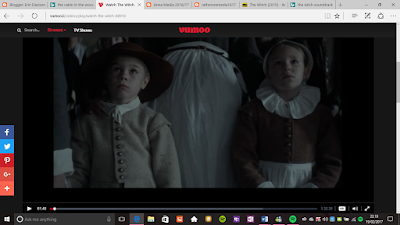Rising at the base of Mt. Fuji in Japan, the legendary real-life Aokigahara Forest is the suspense-filled setting of this supernatural thriller. A young American woman, Sara, journeys there in search of her twin sister, who has mysteriously disappeared. In the company of expatriate Aiden, Sara enters the forest having been well warned to "stay on the path." Determined to discover the truth about her sister's fate, Sara will have to face the angry and tormented souls of the dead that prey on anyone who dares come near them. These malevolent spirits lying in wait for Sara at every turn will plunge her into a frightening darkness from which she must fight to save herself.
CHARACTERS
Natalie Dormer as Sara and Jess Price
Taylor Kinney as Aiden
Eoin Macken as Rob
Stephanie Vogt as Valerie
Yukiyoshi Ozawa as Michi
Rina Takasaki as Hoshiko
Noriko Sakura as Mayumi
Yûho Yamashita as Sakura
James Owen as Peter
SOUND
Journey to Aokigahara
into the forest
into the forest
Song the tent
follow the rope
the reversing river
alone in the cave
the cabin
theme of the forest
JAPAN
SHOT TYPES
The film begins with a nightmare, which is shot in a very particular style that instantly grabs the viewers attention. The shots are very short, very quick give the illusion that she is running, very quickly. This paired with the heavy breathing rk setting and eerie music, send a very spooky vibe and grabs the attention of the viewer. The camera angles constantly change, from behind the running girl, to the front, to the ground.
 Here we can see that the first few clips were just a nightmare, and this is a technique that is used very often in the horror genre as it means terrifying scenes can be created without the worry of whether or no it seems realistic.
Here we can see that the first few clips were just a nightmare, and this is a technique that is used very often in the horror genre as it means terrifying scenes can be created without the worry of whether or no it seems realistic.
In these clips, there is an overlay of shrill screams and cries for help, again reinforcing the terrifying nature of this film.
 Here we can see that the first few clips were just a nightmare, and this is a technique that is used very often in the horror genre as it means terrifying scenes can be created without the worry of whether or no it seems realistic.
Here we can see that the first few clips were just a nightmare, and this is a technique that is used very often in the horror genre as it means terrifying scenes can be created without the worry of whether or no it seems realistic.
A soon as she wakes from her dream, she packs a suitcase, including a photograph of two children, and jets off to Japan. At this point we are unsure why, and this sense of mystery engages the viewers and encourages them to stay watching, an aspect which I think would be great to incorporate into our film.
Here we are shown numerous flash back type scenes that answer all the viewers questions. We are told what brought on the nightmare, why she set off for Japan in the middle of the night, and we learn who Jess, her sister is. These flashback scenes are over layed over a clip of the main character in a taxi in Hong Kong, clearly distraught and worried for her sister's life. I think this technique of inter-locking flashback with modern day is very clever and a technique that we could use in our film.
I also thought this film related well to our movie as it is set largely in a forest area, similar to our film.
Gun Kawamura
Courtesy of Primrose Music
Under License from 5 Alarm Music
Courtesy of Primrose Music
Under License from 5 Alarm Music













